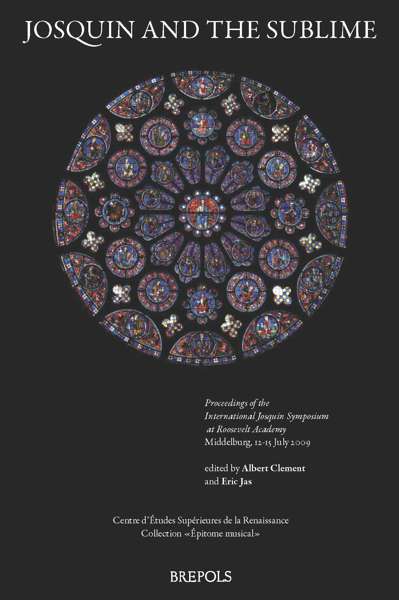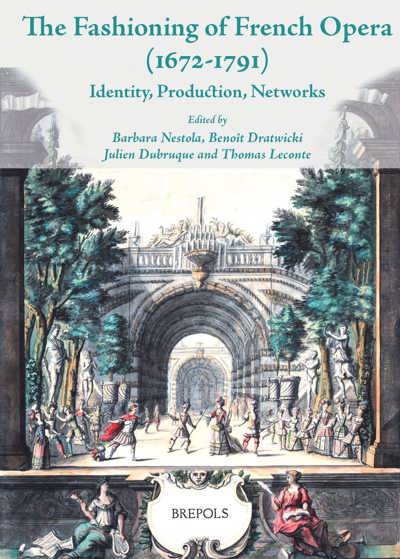
Noble Magnificence
Culture of the Performing Arts in Rome 1644-1740
Anne-Madeleine Goulet, Michela Berti (eds)
- Pages: 619 p.
- Size:230 x 280 mm
- Illustrations:16 b/w, 154 col., 6 maps color, 5 musical examples
- Language(s):English
- Publication Year:2024
- € 50,00 EXCL. VAT RETAIL PRICE
- ISBN: 978-2-503-61312-3
- Paperback
- Available
- ISBN: 978-2-503-61313-0
- E-book
- Available
The thirty chapters of this book present the results of research carried out by an international, multidisciplinary team in the archives of Roman families, focusing on musical, theatrical, and choreographic productions in Rome between 1644 and 1740, viewed through the lens of magnificence
"l libro (che si conclude molto utilmente con glossario, mappe, bibliogra'a, indice delle fonti e dei documenti archivistici, indice dei nomi, indice dei titoli delle opere citate e indice dei luoghi) è di straordinaria importanza, un vero e proprio modello di ricerca capace non solo di stimolare nuove indagini ma di ride'nire approcci metodologici proponendo una lettura critica delle arti performative come pratiche culturali complesse e agenti di memoria, potere e identità. Un'opera monumentale che non solo racconta la Roma barocca ma invita a ripensarla attraverso il prisma della performance, della sua materialità e delle sue strategie di rappresentazione. Insomma da ora in poi gli studi sulla città eterna dovranno cambiare totalmente la loro prospettiva metodologica." (Galliano Ciliberti, in Ad Parnassum: A Journal of Eighteenth- and Nineteenth-Century Instrumental Music, 23/44, 2025, p. 158)
Anne-Madeleine Goulet is director of research at the CNRS. Her field of study is sociability in Ancien Régime Europe and the forms of spectacle that this engendered.
Michela Berti is a specialist in music history and responsible for the historical archive of S. Luigi dei Francesi.
From 2016 to 2022, Goulet and Berti directed and coordinated the PerformArt project, funded by the European Research Council, from which this book has emerged.
The thirty chapters in this book are based on the work of an international, multidisciplinary team of researchers and archivists brought together for the PerformArt project, funded by the European Research Council from 2016 to 2022. This project investigated the artistic patronage of the great Roman aristocratic families of the seventeenth and eighteenth centuries through research in the extant archives.
After the accession to the papal throne of Innocent X in 1644, and more so after the Peace of the Pyrenees in 1659 – which led to a greater loss of power for the pope in his relations with other European states – the Roman families stepped up their efforts to assert their social preeminence not only through architecture and the fine arts, but also through the ephemeral performing arts: music, theatre, and dance, which were omnipresent throughout the year and especially during the intense period of artistic production that was the Roman Carnival. The search for traces of these spectacles in the archives of these families reveals that their desire to display their magnificence – an ideal well documented in the literature of the period – gave rise to lavish expenditure on a scale that could only be justified by the benefits (if not tangible, then at least symbolic) they hoped to gain.
The essays in this book, which draw on social economic history, the history of ideas, and the evolving artistic practices of the time, make a major contribution to our knowledge of courtly societies in Ancien Régime Europe by integrating the performing arts into their analyses in innovative ways.
Overture
Anne-Madeleine GOULET, Introduction
– Prologue: The Roman Context
Isabella CECCHINI and Anne-Madeleine GOULET, Some Thoughts about the Roman Context
Irene FOSI, Magnificence and the Roman Nobility between the Papacy and Europe
I. The Economy of Magnificence
Benoît MARÉCHAUX, Patrons, Aristocratic Patrimonies and Finance: Reconsidering the Economic Foundations of Private Magnificence in Rome (c. 1650-1700)
Isabella CECCHINI, Instruments of Magnificence. Finance and Credit in Early Modern Rome
Maurizio PEGRARI, The Costs of Magnificence, the Magnificence of Costs: Nobility, Economics, and Status in Seventeenth and Eighteenth-Century Rome
Isabella CECCHINI and Anne-Madeleine GOULET, Celebrating a Wedding in the Lante della Rovere Family: An Exercise in Magnificence (1682-83)
Cristina FERNANDES, Portuguese Patronage in Rome and the Economics of Magnificence: La Virtù negl’amori by Alessandro Scarlatti at the Teatro Capranica (1721)
– Intermezzo I. Into the Family Archives
Marco CAVIETTI, Portraying the Family in Household Archives in the Seventeenth and Eighteenth Centuries
Orsetta BARONCELLI, The Computista and the Archivista: Two Key Figures in the Management of Roman Family Archives in the Seventeenth and Eighteenth Centuries
Letizia LELI, Reordering a Family Archive in the Seventeenth Century: The Case of the Lante della Rovere Archive
II. Social Values and Moral Principles
Aldo ROMA, Education to Magnificence: Aristocratic Schooling and College Academies in Seventeenth- and Eighteenth-Century Rome
Sarah MALFATTI, Patronage and Pastoral Simplicity in Arcadia: Patronus nullus esto – the Case of Francesco Maria Ruspoli (1707-21)
Diana BLICHMANN, Sumptuousness versus Sobriety: Magnificence in the Musical Productions at Cardinal Pietro Ottoboni’s Teatro della Cancelleria (1710-12)
Valeria DE LUCCA, Ars moriendi in Seventeenth-Century Rome: Staging Lorenzo Onofrio Colonna’s Death
– Intermezzo II. Some Thoughts on Method
Manuela GRILLO and Michela BERTI, Magnificenza as a Paradigm in the Development of a Thesaurus: From Scientific Research to a Difficult Definition, and Back Again
III. Conquering and Asserting Magnificence
Sara Elisa STANGALINO, Lorenzo Onofrio Colonna ‘L’Africano’: Military and Artistic ‘Campaigns’ in Rome and Spain
Barbara NESTOLA, ‘Donna regale in auree scene t’apre il mondo in teatro’: Maria Camilla Pallavicini Rospigliosi and Opera in Rome at the End of the Seventeenth Century
Michela BERTI, The Conquest of Magnificence: The Performing Arts and the Social Ascent of the Vaini Family
Huub VAN DER LINDEN, Boxes at the Teatro Capranica in 1732: Occupants, Financial Dealings, and Social Visibility
– Intermezzo III. Brokers of Magnificence in the Noble Household
Natalia GOZZANO, Maestri di casa: Masters of Roman Magnificence in the Old Regime
Alexandra NIGITO, The Christmas Cantata in Rome: Papal Munificence and Self-promotion by the Majordomo (1676-1740)
Émilie CORSWAREM, The Art of Appropriation: Girolamo Colonna and the Festivities Held at Rome for the Coronation of Ferdinand IV as King of the Romans (1653)
IV. Magnificence on Stage
Gloria GIORDANO, ‘Si è fatto di nuovo ma impiegandovi molte cose del vecchio’: The Artifice of Magnificence in the Choreographic Episodes at the Seminario Romano
Valentina PANZANARO, Monumentality and Magnificence: Dance and Dramaturgy in Seventeenth century Roman Visual and Musical Sources
José María DOMÍNGUEZ, Gloria GIORDANO, Chiara PELLICCIA, Beyond Magnificence: The Caduta and its Imagery in the Performing Arts in Seventeenth-Century Rome
Teresa CHIRICO, Magnificence in Miniature: The Puppet Theatre of Cardinal Pietro Ottoboni in the Palazzo della Cancelleria (1694-c. 1712)
– Intermezzo IV. The City as a Stage. The Roman Scene in the Early Eighteenth Century
Antonella FABRIANI ROJAS, Nobility, Spectacle, and Competition: Reflections on Francesco Valesio’s Diario (1700-42)
V. The Glories of Fame: Reputation, Circulation, Market
Chiara PELLICCIA, The Colonna Family and the Performing Arts in Villeggiatura at Marino
Élodie ORIOL, From the Reputation of the Artist to the Magnificence of the Prince: The Borghese Family and its Musicians in the Eighteenth Century
Giulia VENEZIANO and Margaret MURATA, Rome, Naples, Opera and the 1720s in Rome
Glossary
Maps
General Bibliography
Sources and Archival Documents
Names of Individuals and Communities
Titles of Works
Place Names




